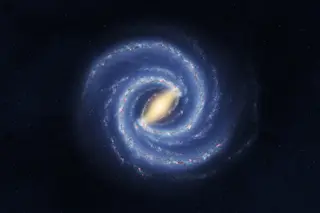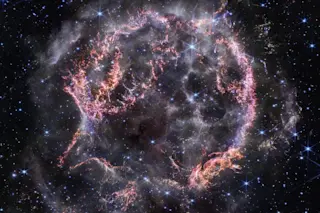Astronomers are not easily surprised. Professional familiarity with black holes, colliding galaxies, and other outlandish cosmic phenomena breeds a high tolerance for the unusual. But a team of astronomers recently discovered something odd enough to make even their most jaded colleagues take notice: a vast fountain of antimatter that appears to be spewing from our galaxy’s center. This certainly is surprising, says team leader William Purcell of Northwestern University. It poses more questions than we have answers.
The evidence comes courtesy of the Compton Gamma Ray Observatory, a six-year-old satellite designed to study the most energetic radiation in the universe. Purcell’s team used the satellite to look for signs of positrons--the positively charged antimatter version of electrons. Antimatter flits into existence in a variety of ways: it is produced by black holes, supernovas, and some types of radioactive decay. Whenever a positron meets an electron, they annihilate each other, producing a burst of gamma rays of a specific wavelength. Purcell used the Compton satellite to search the galaxy for this telltale wavelength.
The search was a lengthy one. Since the satellite looks at the sky one small patch at a time, it had to take many overlapping snapshots to pin down the location of a gamma-ray source. It took more than five years for Purcell to get enough observing time to complete the map, but when he finally pieced it together, he found a vast cloud of antimatter that seems to hover over the galactic north pole.
Astronomers aren’t sure what’s causing the cloud--or if it is indeed at the galaxy’s core. The positrons may be jetting from superhot gas falling into a giant black hole believed to inhabit the center of our galaxy. Or the antimatter may have escaped the galactic center after a series of supernovas blew a hole in the top of the galaxy. The cloud may even be much closer than most astronomers think and be part of the debris of a nearby supernova. Since Purcell doesn’t know how many positrons are in the cloud, he doesn’t know its density or absolute brightness, two means astronomers often use to gauge distance. We hope to do more observations to see if this object is connected to the galactic center, he says.














